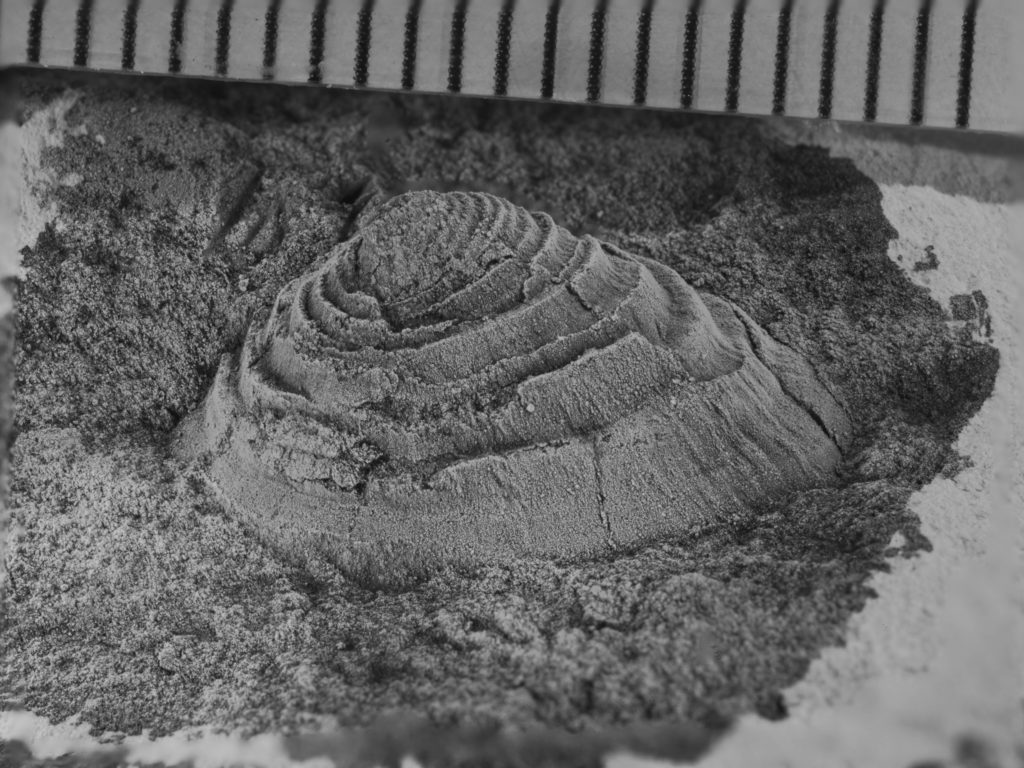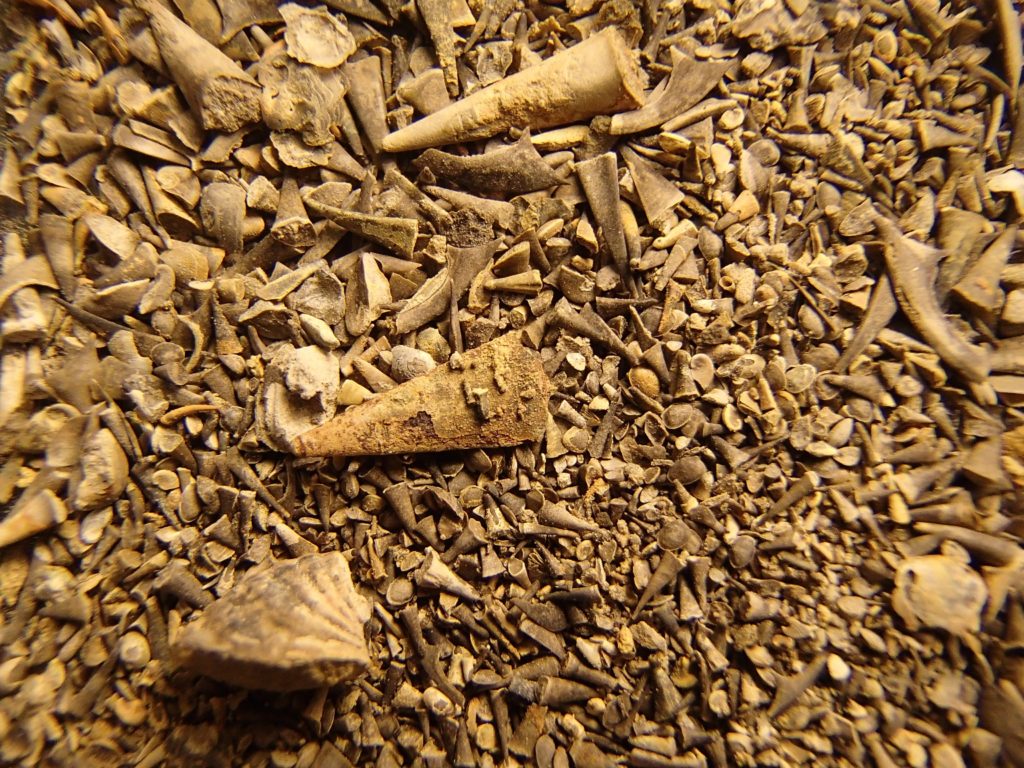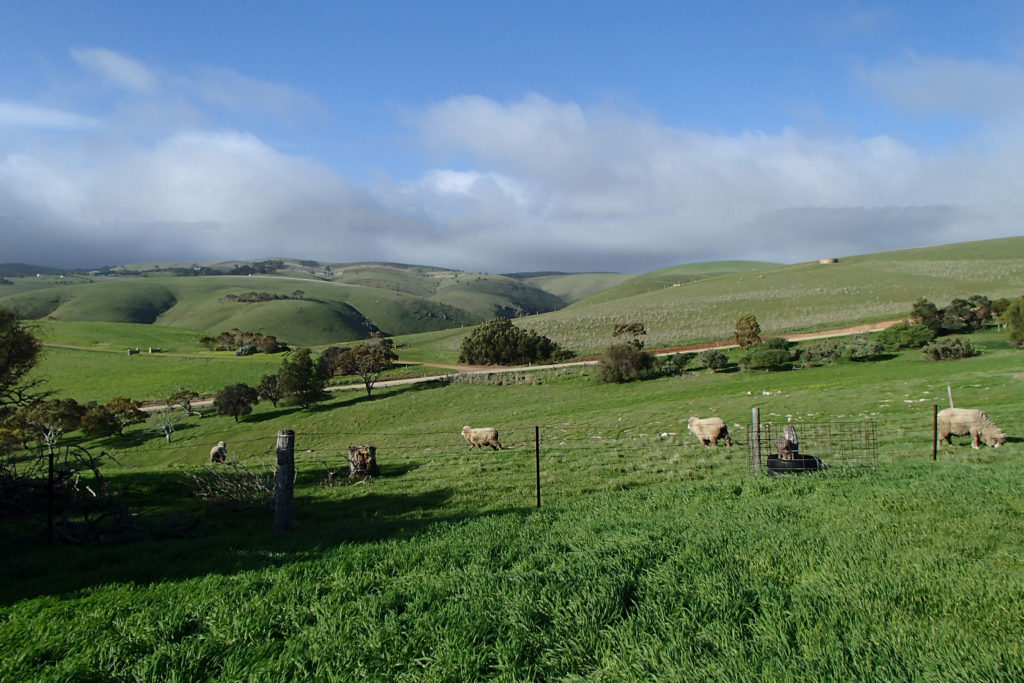Sarah Jacquet is currently a postdoctoral researcher at the University of Missouri, Columbia, USA. She completed her doctorate in 2016 at Macquarie University, Sydney Australia; her thesis focused on unravelling the early evolution and radiation of the phylum Mollusca from the lower Cambrian of East Gondwana. This broad focus was channeled into various fields of research including taxonomy, biostratigraphy, taphonomy and early ontogeny of ancestral macro- and micromolluscs. Since then she has broadened her interests to include other phyla and time intervals, using x-ray microscopy to investigate and reconstruct the scleritome assembly of multi-element organisms. You can follow Sarah on Instagram @Palaeothemes.
The rocks of the Flinders Ranges archive one of the most significant events in the history of animal evolution – the Cambrian Radiation. Observable from space, the exquisitely folded successions of carbonate and siliciclastics in this region are in fact host to a diverse fauna of millimetric-scale fossils, commonly called ‘small shelly fossils’. Representing some of the first organisms capable of constructing their own shell, these fossils record the rapid diversification of novel body-plans that would set the foundation for most animal Phyla and hence define the Phanerozoic Era. Now you can’t tell me that doesn’t peak your interest.
I was ultimately coaxed into this fascinating world by such a sales pitch. The Cambrian Period (542-480 Million years ago) had a lot to offer in the way of new discoveries, but it also happened to be in my backyard (well, sort of). I fell into a PhD in this area, studying the earliest representatives of the mighty Phylum Mollusca from an East Gondwanan perspective.
In summary, my PhD research covered aspects of molluscan taxonomy, biostratigraphy, and biofacies from the lower Cambrian of Australia. My focus was studying the biostratigraphy of both micromolluscs and a suite of previously undescribed macromolluscs from sites across South Australia to help in global correlations and temporal resolution (which fell under a much larger project with fellow PhD student (Dr.) Marissa Betts). Fortunately for me, this meant getting out into the field to find said molluscs and assist with other PhD projects.
My fieldwork took me to various Cambrian deposits in South Australia during my PhD in search of the elusive macromolluscs (=centimeter-scale limpet-like shells). Our most successful trip to the ‘white horizon’ in the Chase Range, Flinders Ranges revealed abundant remains of a particularly beautiful beast which we called Minastirithella silivreni after the white city of Gondor —Minas Tirith— from Lord of the Rings (silivreni = ‘white’ in Elvish. Yes, we are a bunch of nerds)1. We had relatively little success in other areas. Thankfully the South Australian Museum had an array of specimens collected from sites across the Flinders Ranges and beyond2. As for the micromolluscs, they are comparatively conspicuous once you dissolve the limestone they are trapped in.
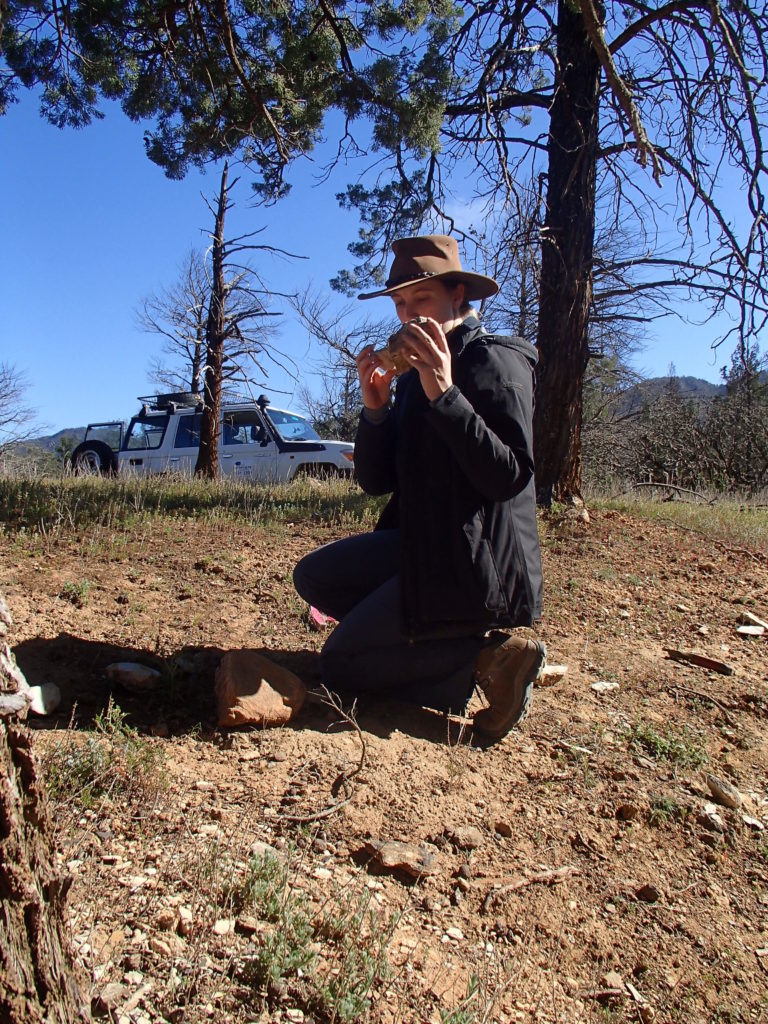
Me looking up close at a sample from the ‘White Horizon’, Chace Range, Flinders Ranges, South Australia (photo by Marissa Betts)
Collecting micromolluscs, or any Cambrian small shelly fossil for that matter, is relatively simple given the right conditions. First, find a good succession of Cambrian carbonate rocks (i.e. the Flinders Ranges and site of the ancient Arrowie Basin), then roll out the tape perpendicular to the bedding and sample systematically. Back at Macquarie University, we would dissolve the limestone in a buffered solution of acetic acid to retrieve the molluscs that had been infilled by an insoluble mineral, most commonly apatite. Then the specimens were mounted on stubs and gold-coated for SEM imaging. Repeat this process and you start to get a good idea of the distribution of fauna both spatially and temporally.
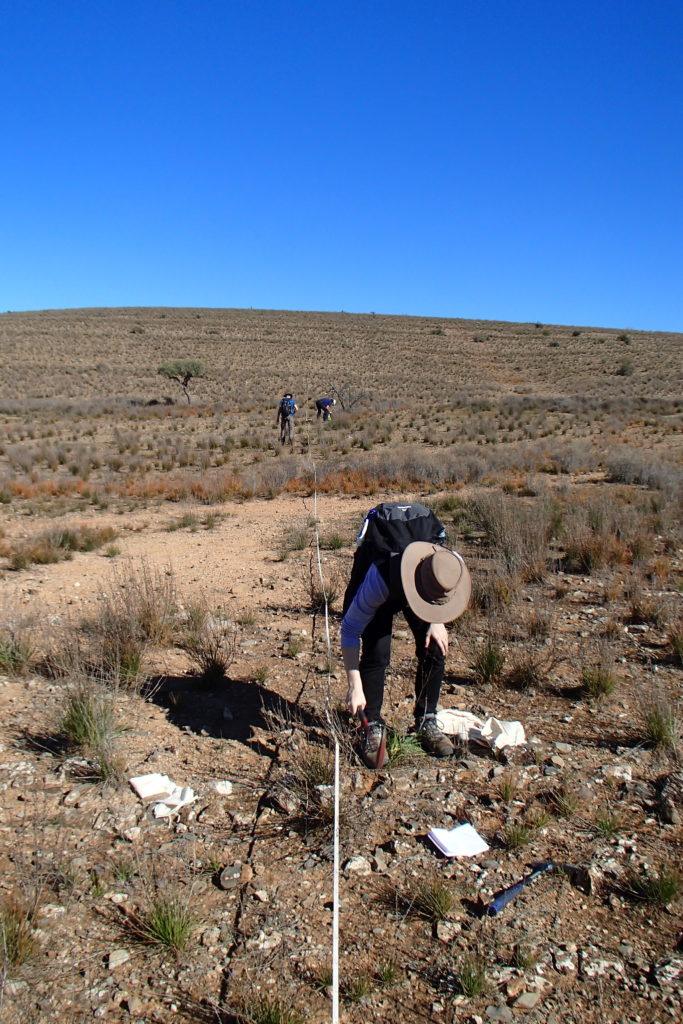
Collecting samples alone the tape, nearby Donkey Bore Syncline, Flinders Ranges, South Australia (photo by Marissa Betts)
My biostratigraphic work took me across the Flinders and further south to yet another Cambrian basin, known as the Stansbury Basin. Unlike the dichotomy of the Flinders Ranges, being either scorching hot or cold and dry depending on the season, the Fleurieu Peninsula just South of Adelaide seems capable of expressing every weather system in a single day. This latter region hosts the oldest Cambrian-age shelly fauna in Australia. Key molluscan taxa recovered from these deposits provide important temporal resolution of the strata, which has further enabled global correlation with contemporaneous rock sequences3.
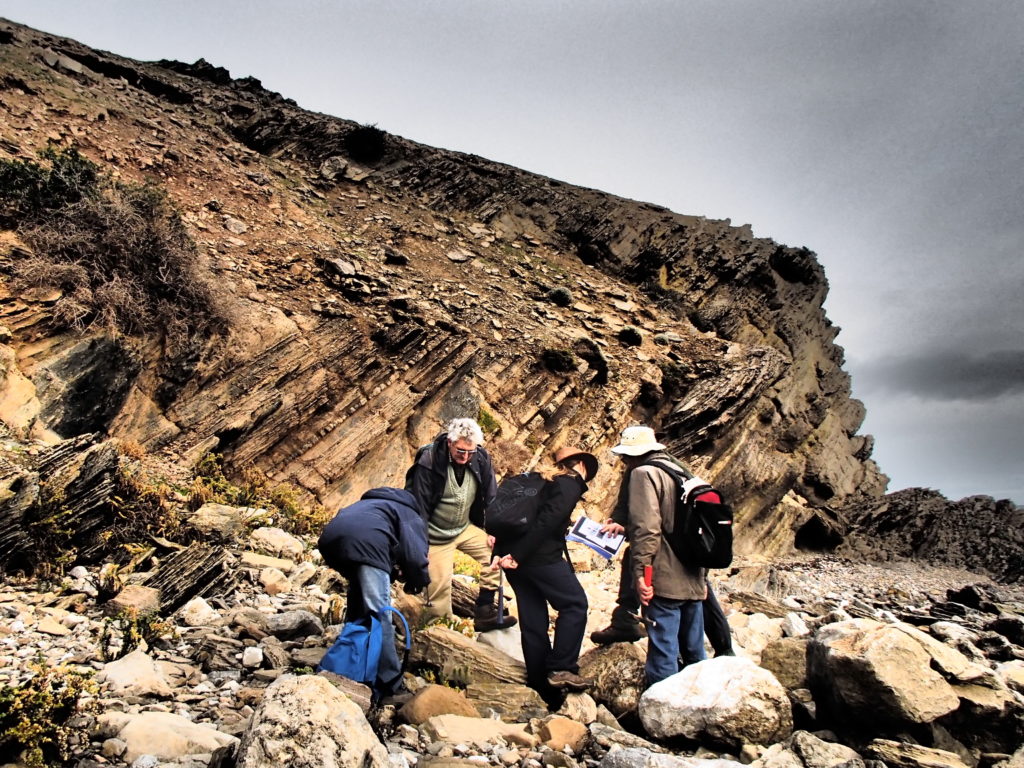
Standing by the beach, Sellick Hill Formation, Fleurieu Peninsula, South Australia (photo by Marissa Betts)
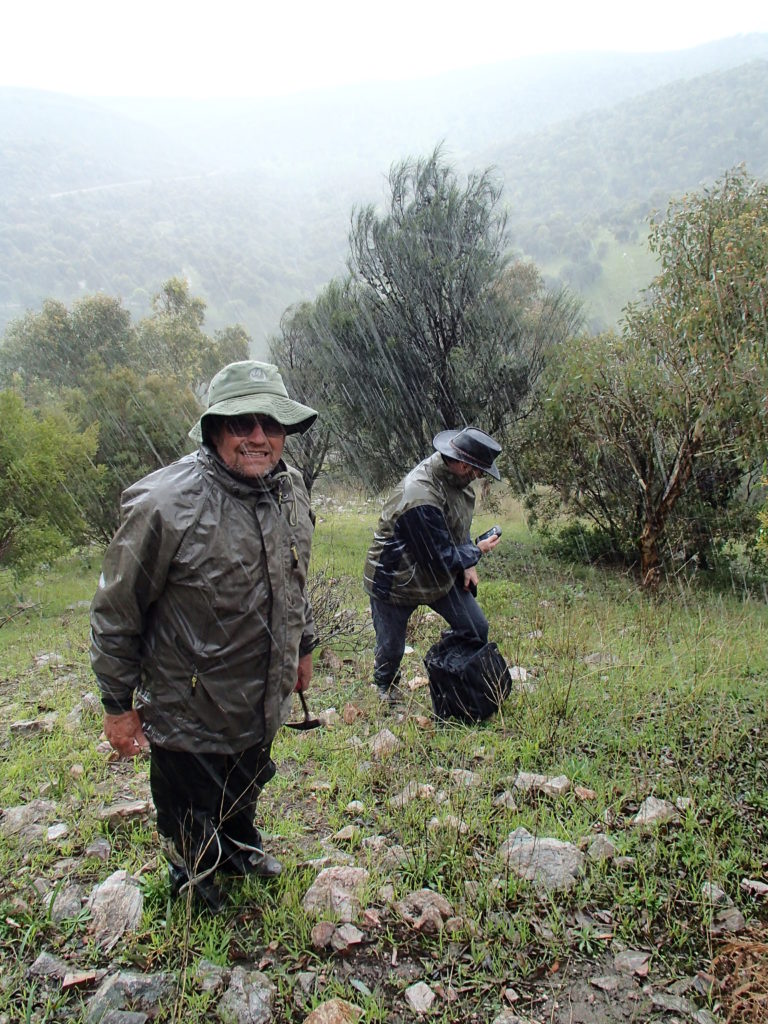
Caught in the rain with colleagues Tom Bradley (left) and my PhD supervisor Glenn Brock (right) – (photo by Marissa Betts)
Fast forward to today and I find myself as a Postdoctoral Fellow at the University of Missouri. I still love my molluscs, but my broader research interests now encompass the emergence and diversification of complex animal body-plans throughout the Palaeozoic. Using a combination of high-powered imaging techniques (such as micro-CT) I can virtually piece together the disarticulated remains of multi-element organisms (and vice versa) to investigate aspects of their functional morphology and affinity to other organisms.
Since endeavoring to solve the Cambrian puzzle piece-by-piece, I have certainly covered some terrain, met some amazing people, presented my research internationally, and I intend to continue doing so.
References:
- S. M. Jacquet & G. A. Brock (2016) Lower Cambrian helcionelloid macromolluscs from South Australia. Gondwana Research, 36: 333-358.
- S. M. Jacquet, J. B. Jago & G. A. Brock (2016) An enigmatic univalve macromollusc from the lower Cambrian (Series 2, Stage 3) Heatherdale Shale, South Australia. Australasian Palaeontological Memoirs 49:21-30
- S. M. Jacquet, T. Brougham, C. B. Skovsted, J. B. Jago , J. R. Laurie, M. J. Betts, T. P. Topper & G. A. Brock (2016) Watsonella crosbyi from the lower Cambrian (Terreneuvian, Stage 2) Normanville Group in South Australia. Geological Magazine: 1-17
![]() This work is licensed under a Creative Commons Attribution-NonCommercial-ShareAlike 4.0 International License.
This work is licensed under a Creative Commons Attribution-NonCommercial-ShareAlike 4.0 International License.


